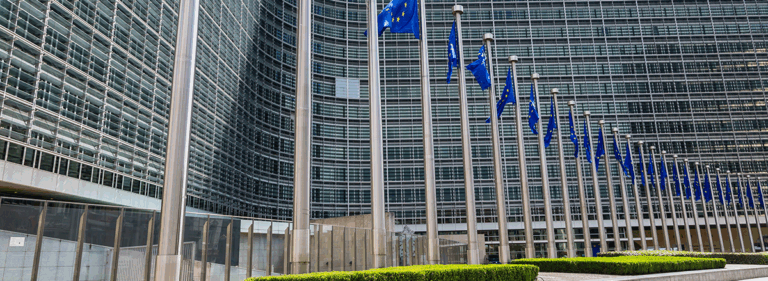People, Planet, Progress: An opportunity for an international agreement on AI climate sustainability at India’s AI Impact Summit 2026

India will host the AI Impact Summit in New Delhi in February 2026, bringing together global leaders to discuss artificial intelligence’s role in society. The summit’s theme of three ‘sutras’, including ‘People, Planet, Progress’, reflects a vision that technology should serve humanity and sustainability. Having recently become the ‘COP of AI’ for global policymakers, the summit is an opportunity to agree on high-level global governance to improve the climate sustainability of AI compute. Policymakers can examine international governance measures to integrate AI into climate frameworks so they incorporate environmental accountability into AI development and use.
The New Delhi summit builds on the momentum of its predecessors. The Bletchley Park and Seoul summits focused on AI safety. The Paris Action Summit in 2025 expanded the agenda by introducing sustainability and inclusivity priorities at the international level. The India meeting can go further by focusing the global discussion on the everyday impacts of AI and compute. It can give global governance a stronger focus on beneficial planetary outcomes rather than only risks. India is also well-positioned to help bridge the divide between the global North and South.
How to account for AI in climate commitments
The ‘Planet’ sutra aims to promote the idea that AI should be designed, at the very least, to respect the climate and environment, and ideally, to prioritise climate-positive AI applications. This means AI’s development must be resource-efficient and aligned with global sustainability goals.
International climate agreements, such as the Paris Agreement, focus on country-level emissions cuts, while the UN Framework Convention on Climate Change (UNFCCC) conducts a Global Stocktake to assess collective progress. However, these assessments do not account for the impact of technologies like AI, despite the rapid growth of these technologies. The first step in aligning AI with climate goals should therefore be to incorporate them into global climate accountability frameworks.
The most effective way to integrate AI into climate accountability is to develop standard measures for AI-related emissions. This would make it easier to create global and localised policies that are measurable and limit AI’s environmental impact.
If national governments could account for emissions from data centres and AI compute within national climate plans, it would highlight their contribution to national emissions. They could then report these numbers in the context of the Paris Agreement. Over time, these data will also show progress in greening AI compute. Today, these initiatives are primarily voluntary, relying on unaudited self-reporting with few disclosure requirements.
The Global Stocktake, a periodic review of global climate progress, could incorporate AI compute in its analysis, with emission estimates from global data infrastructure and projections of how AI trends might affect energy demand. Climate negotiators and policymakers could regularly assess whether AI growth is progressing in a sustainable manner.
Emissions disclosure and efficiency standards for AI
If AI were on the climate agenda, it could create the necessary means and momentum for setting rules and incentives to reduce its carbon impact, and potentially respond to calls for mandatory emissions disclosure for AI systems and their data centres. Companies and research labs would likely have to report the amount of energy and carbon involved in training and deploying their AI models. Investors and the public could then hold organisations accountable for AI’s environmental impact. It would facilitate informed consumer choice and promote competition for efficiency, while providing policymakers with the data they need to see the big picture.
This would establish standards for transparency and energy efficiency in the AI infrastructure industry. Policymakers could set benchmarks for data centre efficiency, and set standards for AI hardware, promoting chips and servers that deliver more computing power per watt of electricity.
Greening AI through public procurement: Leading by example
In the context of climate sustainability, the ‘Progress’ sutra means climate-positive AI innovation. This is where high-level governance actions and international cooperation become critical.
Government purchasing power is another powerful tool to drive change. Public sector agencies are major buyers of technology, ranging from cloud services to AI software for applications. By demanding green criteria, governments can push the market toward sustainability.
The United Kingdom’s digital strategy is a good example. It sets a goal for all government digital services to use sustainable technology and even specifies using 100% renewable power for government technology operations. This demonstrates that it is feasible to introduce green standards in procurement without compromising functionality. It could actually save money in the long term, as energy-efficient services are expected to reduce operating costs.
Public procurement can also favour products that disclose their AI’s carbon footprint. International organisations and multilateral development banks can also adopt green procurement policies for their technology and AI needs. When entities like the United Nations or World Bank fund digital projects in developing countries, they can require energy-efficient, climate-friendly technology.
Supporting sustainable AI in the Global South
The ‘People’ sutra of the Summit comes from a conviction that AI must serve all of humanity, and that inclusivity has a climate dimension.
Any meaningful discussion of AI and climate must be global in scope. Many countries in the Global South are eager to harness AI for economic and social progress. However, there is a lack of access to advanced computing resources, and the risk that, as they obtain those resources, they could import inefficient, high-carbon technologies. There is a real danger of a growing compute divide where only rich nations have the capacity to run cutting-edge AI, and poorer nations either fall behind or adopt older, carbon-intensive technology. Policymakers at the summit can support the Global South in obtaining AI compute capacity in a sustainable way.
The People sutra is a reminder that AI should serve humanity in all its diversity, and this means addressing the digital divide. Access to compute and expertise is uneven, leaving many regions behind. At the summit, governments could commit to international cooperation programmes to expand AI capacity in developing countries.
This means investment in green infrastructure to support ‘climate-positive AI’. The international community should help finance modern data centres in developing regions that are powered by renewable energy and built for efficiency. International funding and technology transfer can make this happen. This could take the shape of a dedicated international fund or initiative, perhaps under the umbrella of existing climate finance programmes. Multilateral development banks and public-private partnerships could offer grants or low-interest loans for sustainable compute infrastructure projects. This would mirror how green energy projects are funded in developing countries, but with a focus on digital needs.
Supporting the Global South also means capacity building in energy-efficient AI. This might include shared training resources, funding for regional AI research centres and collaborative projects on climate adaptation using AI. Sharing best practices on how to code and deploy AI to use minimal resources is important. If developers in every country are aware of techniques like model optimisation, which reduces computational load, and if they have access to efficient hardware, it minimises energy consumption. International collaborations can help provide training and tools for this. This could lead to treating efficient AI as a facet of digital literacy and skills programmes.
Finally, equity and climate considerations suggest that developed countries should include compute and AI access in their climate finance. Traditionally, climate finance is about funding renewable energy projects or climate adaptation in poorer countries. However, as part of adapting to and achieving sustainable growth, why not fund low-carbon digital infrastructure? This would recognise that in the 21st century, access to computing is a development necessity, and it should be clean access.
India’s summit can highlight this issue as a key aspect of inclusive growth. Sustainable AI should be a global public good, not a privilege.
International coordination for climate-aligned AI
No single country can green AI alone. The challenge is transnational. AI algorithms trained in one country may be deployed on servers in another and utilised by individuals in a third. Climate effects of emissions anywhere affect the entire planet. This calls for international coordination and governance to align AI development with climate sustainability.
One avenue is to use existing international bodies to coordinate this agenda. The UN Secretary-General’s office could convene a high-level group to examine the climate impact of AI, bringing together experts and stakeholders to recommend actions. UN Climate Change (UNFCCC) could incorporate a workstream on digital technology emissions, ensuring it’s discussed at the annual climate summit.
The OECD, which is active in AI policy, can develop guidelines for sustainable AI. It is well-placed to gather data and set benchmarks, since many major AI-developing economies are OECD members. The OECD could develop best practice recommendations on measures such as assessing AI energy use or policies that member countries can adopt to mitigate AI’s carbon footprint. It could also work toward agreement on common standards to prevent fragmentation and make it easier for companies to comply across markets.
Beyond the UN and OECD, forums like the G20 can put this issue on their agenda, as they often discuss the digital economy and climate. Even the annual AI summit itself could be a forum for facilitating transparency in AI compute and tracking progress in sustainability.
If only a few countries mandate AI energy disclosures or standards, companies might relocate activities to places with looser rules, which doesn’t help the planet. International cooperation can lead to more harmonised policies or at least mutually reinforcing ones. It can also mobilise funding towards low-carbon AI technologies.
India’s role as a convener and bridge-builder
India’s presidency of the 2026 AI Impact Summit puts it in a unique position to lead on the intersection of AI and climate. As a rapidly developing technology powerhouse, India understands the promise of AI for progress. As a nation highly vulnerable to climate change, it also grasps the urgency of sustainability. India has often acted as a bridge between developed and developing countries in global forums and can ensure the dialogue includes equity and common but differentiated responsibilities.
The very theme ‘People, Planet, Progress’ signals this balance.
A possible outcome could be a ‘Delhi Declaration on AI for Sustainable Development’, where countries agree on basic principles on accountability, efficiency and support for the Global South. This could then be taken to larger forums, such as the UN, for endorsement.
India’s role is about momentum. India can propose follow-up mechanisms such as an annual report or a working group to track progress on the commitments made. It can also integrate outcomes into other international processes.
Progress in AI can also mean progress in sustainability
The good news is we do not have to choose between technological progress and protecting the planet. By proactively aligning AI development with climate sustainability, governments can harness the benefits of AI while mitigating its environmental downsides.
The summit should seek agreement to measure and include AI’s carbon footprint in climate plans. Summit policymakers should seek agreement and demand transparency from AI developers; emissions disclosure is the first step toward accountability. The summit has the potential to agree on a path towards standards so that efficiency and clean energy become the default in AI infrastructure. Governments can lead by example, turning procurement into a driver for greener AI solutions. The global community can agree in India to facilitate sustainable compute power equally. International cooperation, whether through the UN, OECD, or new coalitions, is critical to set a common direction and avoid fragmentation.
The sutras of ‘People, Planet, Progress’ can ensure that AI’s growth and planetary climate goals advance together, creating a future where the age of AI is also an age of sustainability.

































